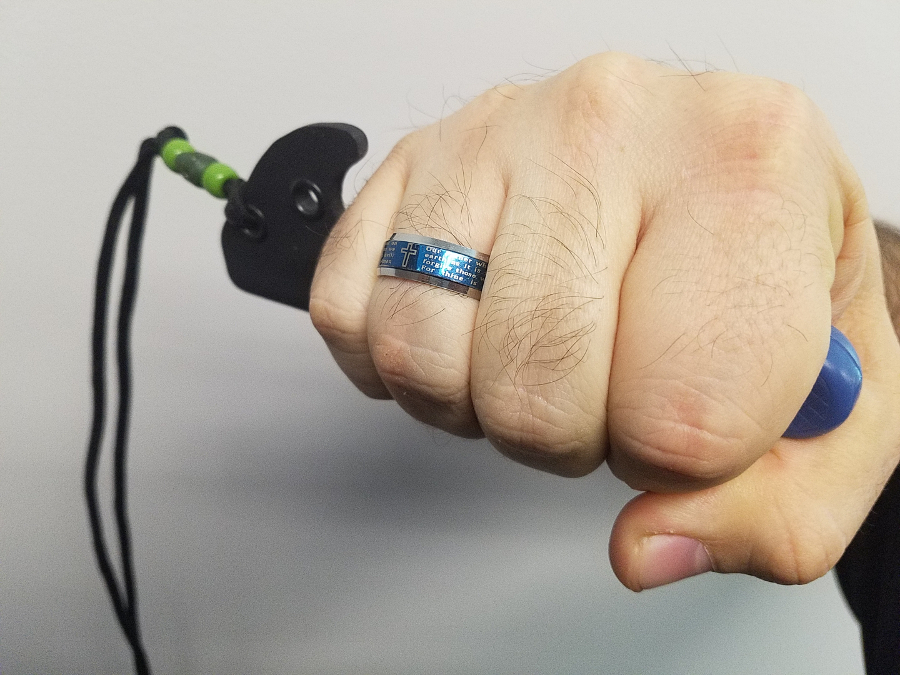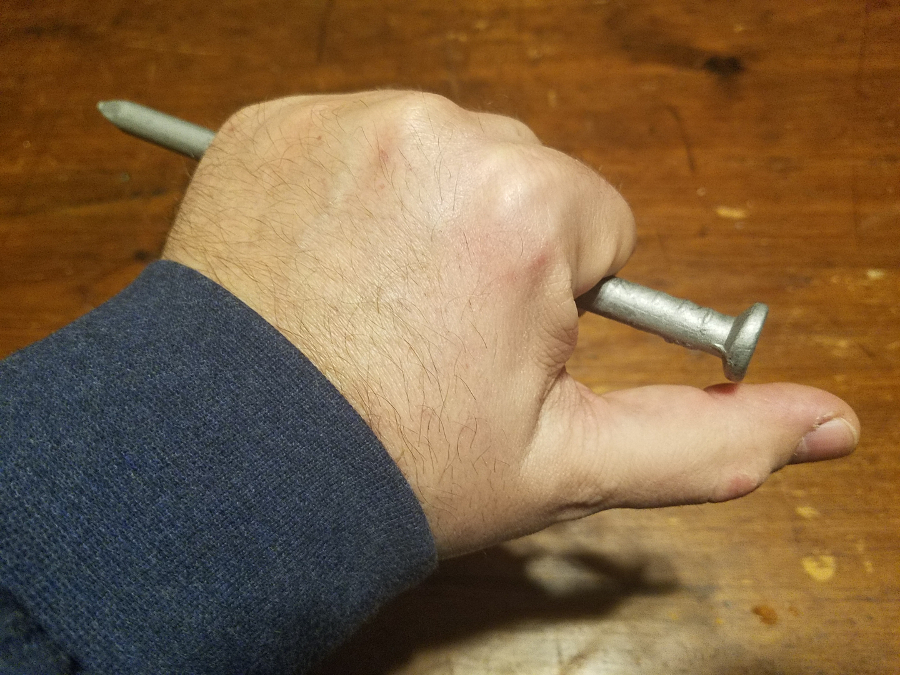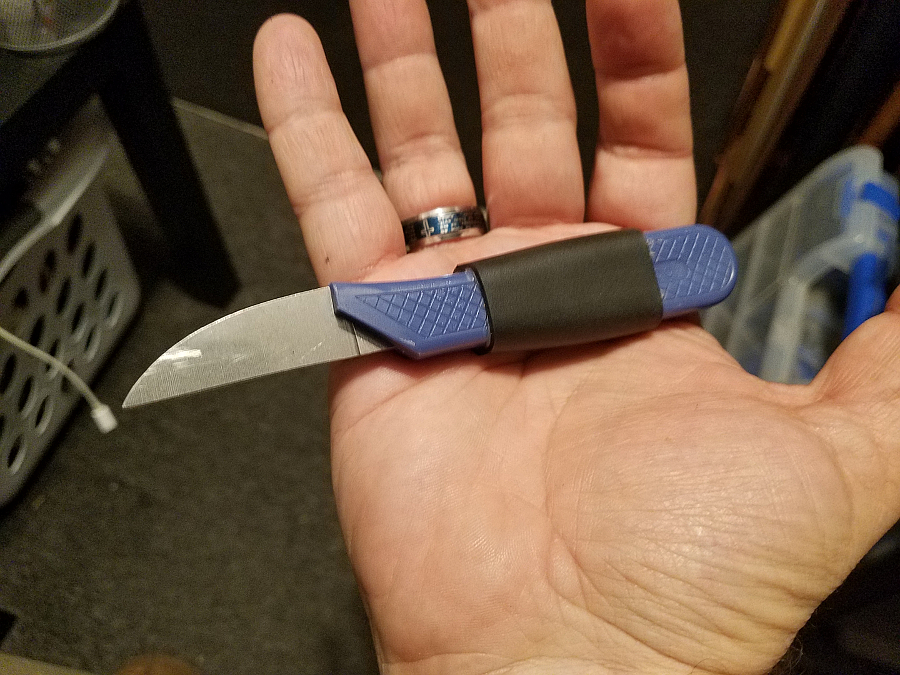There is an interesting streak of minimalism trending in the “tactical” and self-defense communities right now. We could call it “hobotactical.” Among the personalities promoting this trend (although minimalism, in and of itself, is not their aim) are such popular instructors as Ed Calderon of “Ed’s Manifesto.” Call it “ghetto fighting” or call it whatever else; the trend, and the “flavor” of popular self-defense methodologies these days, is definitely towards less rather than more.

What I mean by “hobotactical” is that more and more instructors are seeing the value in advocating quickly disposable tools, even non-metallic ones, for expedient self-defense. The beauty of methods like this is that they are universal and can be employed irrespective of local laws. For example, Calderon teaches students to do things like buy a disposable paring knife and use a melted soda bottle to form a sheath, creating what is essentially the type of shank you would associate with homeless people — but which is no less deadly for being cheap and “uncool.” That, of course, is just one example. There are several instructors prominent in the tactical field these days promoting pragmatic, quick-and-dirty fighting methods and attitudes that are applicable across a wide variety of cultures, scenarios, situations, and legal environments.
Methods like these contrast sharply with some of the self-defense programs and a LOT of the self-defense gear that predominated the tactical industry in previous decades. Gear fixation, for example, crescendo with companies offering tactical knives that cost as much as a good handgun.

Simply put, there is absolutely no perceptible increase in quality from a hundred-dollar knife to a three-hundred dollar knife, and there is nothing a hundred-dollar knife can do that a fifty-dollar knife cannot. Yes, when it comes to gear, you do get what you pay for… up to a point. Obviously most dollar-store knives, especially folding knives at that price point, won’t be as strong or durable as knives that cost even twenty US dollars. You pay for quality, but the economies of scale involved mean that you don’t get much additional quality beyond a certain price point.
More importantly, though, the “hobotactical” trend is undermining a burgeoning attitude of complexity that pervaded the industry in previous years. Before vetting instructors on the Internet became commonplace, video instruction and printed programs got to be absolutely outlandish. Anybody who remembers the old TRS and Paladin catalogs from the day recalls some of these sillier instructors and the snake oil they were peddling — programs that purported to be the defensive methods of the ancient Egyptians, or the Roman gladiators, or pseudo-scientific manuals full of unworkable and over-complicated nonsense that was dressed up to look like modern fighting doctrine. What all those ridiculous systems and personalities had in common was that they tried to make self-defense seem more difficult than it is. They added layers and layers of complexity onto the issue in order to sell solutions manufactured where there was no need (or where the need was fundamentally misunderstood).

The popularity of Mixed Martial Arts was in some ways a reaction to this hype and complexity. Sadly, unless the answer to the question, “How should I defend myself” is, “Be the biggest, strongest, and most aggressive person in every encounter,” MMA isn’t the answer. There will always be somebody bigger, always be somebody stronger, and always be somebody more aggressive, no matter how hard you train (and no matter how much you bench-press).
The “hobotactical” trend looks at this problems and asks, “How can I be sneakier? How can I be nastier? How can I be more practical?” It is absolutely the essence of martialism, of fighting unfairly, of taking every possible advantage and of refusing to fight the other guy’s game. Self-defense, after all, isn’t a contest or a competition. It’s not a match to see who’s the better fighter. It’s the initiation of unwarranted physical force against you by someone who has no right to use that force — and your response to that initiation. However you preempt or neutralize force used against you is not a question of who’s tougher or better.
It’s a question of who’s smarter, who’s more prepared, and in many cases, who’s more ruthless. In this way, the “hobotactical” trend can empower anyone, of any age and in any physical ability range, to better defend themselves from an aggressive attacker. It doesn’t matter if the average guy posting on a Mixed Martial Arts discussion board thinks you’re a cowardly D&D nerd who “needs” a gun or a knife to feel like a big man. His editorial embellishments are quite irrelevant to whether you stopped someone from mugging you. What matters is whether you are equipped with tools and methods that you can use no matter where you are and no matter what circumstances apply.

In this way, “hobotactical” methodology isn’t about gear, but about attitude. It’s about the mindset you bring to the problem and the ruthless and even inventive lengths you’ll go to solve it. While it’s possible to take tactical minimalism too far — to the point that expedient weapons become almost trendy, giving rise to jokes about “tactical fire-hardened sticks” being what the “cool kids” are carrying these days — I think at its core this trend towards minimalism is a good thing. It at the very least takes us in the right direction, even if it’s possible to become too enamored of it.
All human endeavor has the potential to be taken too far or misused, and this “hobotactical” attitude is no different. On the whole, though, I think it gets more right than it gets wrong, if for no other reason than that mindset is something that can be applied by anyone to any place at any time. This is the essence of practical and pragmatic self-defense. It is what arms any citizen, no matter how young or old, no matter how fit or infirm, to stand up for themselves and protect their lives. That’s a good thing in my book.
Interesting subject except that you did not actually answer the question you posed as part of the title. May I suggest you just get to the point on all your articles. I think this should have been titled, “What is “Hobotactical” and why is it relevant?” or “What is “Hobotactical” and why learn it?”.
Just share and teach because I have read only 3 of your articles and am learning about things I had not heard about and find them interesting. I’m supporting you and want to read more.
Actually, I answered the question in the last paragraph of the article. I think you’ll find that all of my articles get to the point.
It was an excellent breakdown on the subject. I’ve pondered over this trend for long, but I never asked myself when the “hobotactical” philosophy could be taken too far.